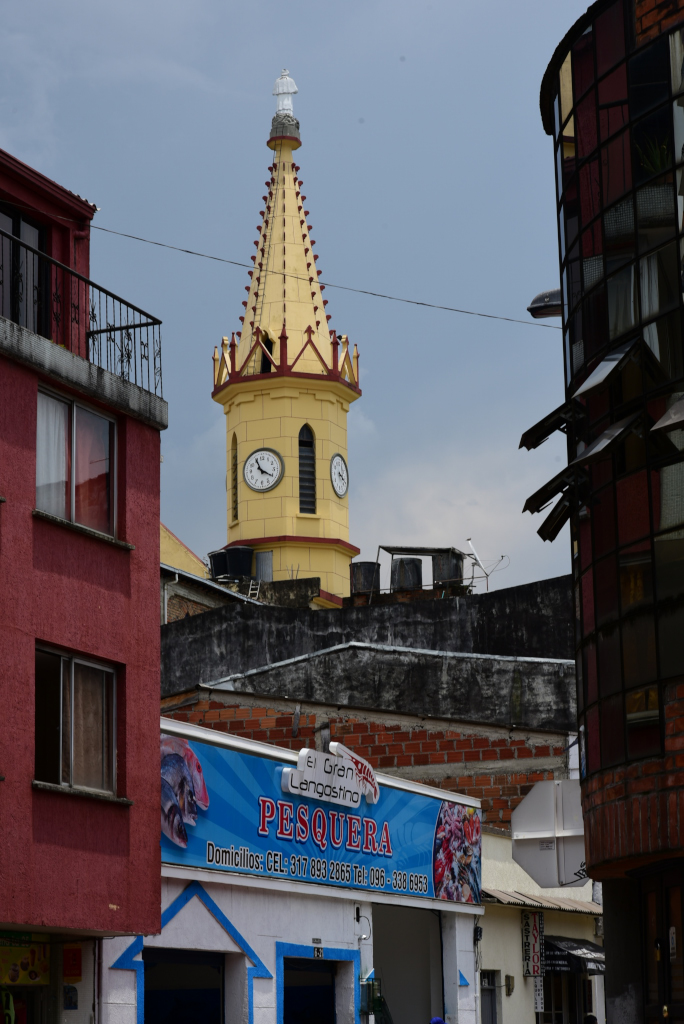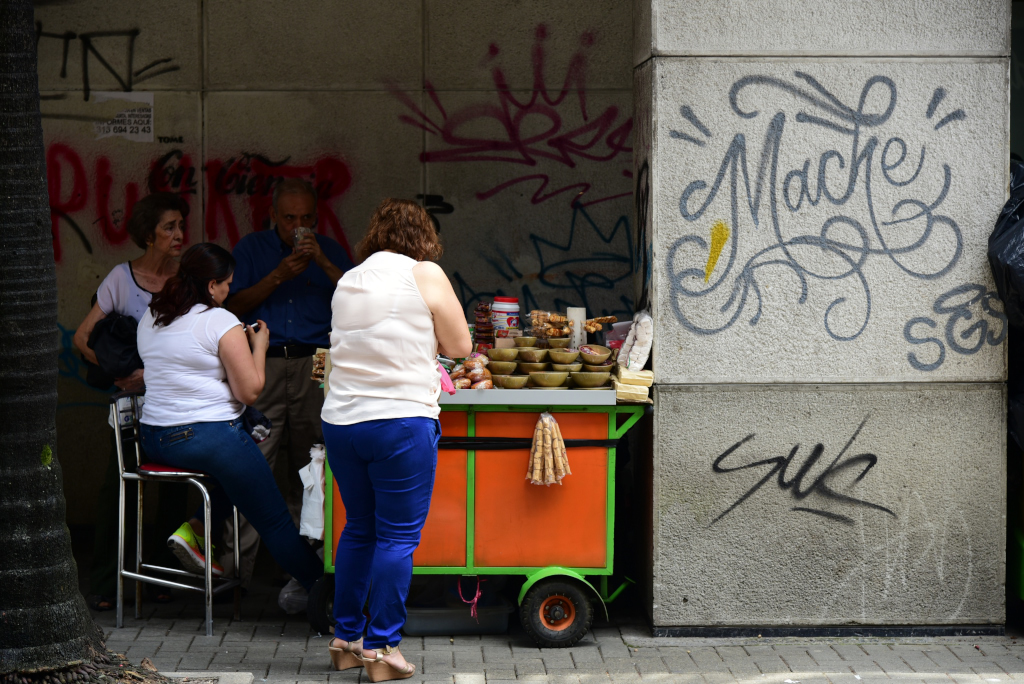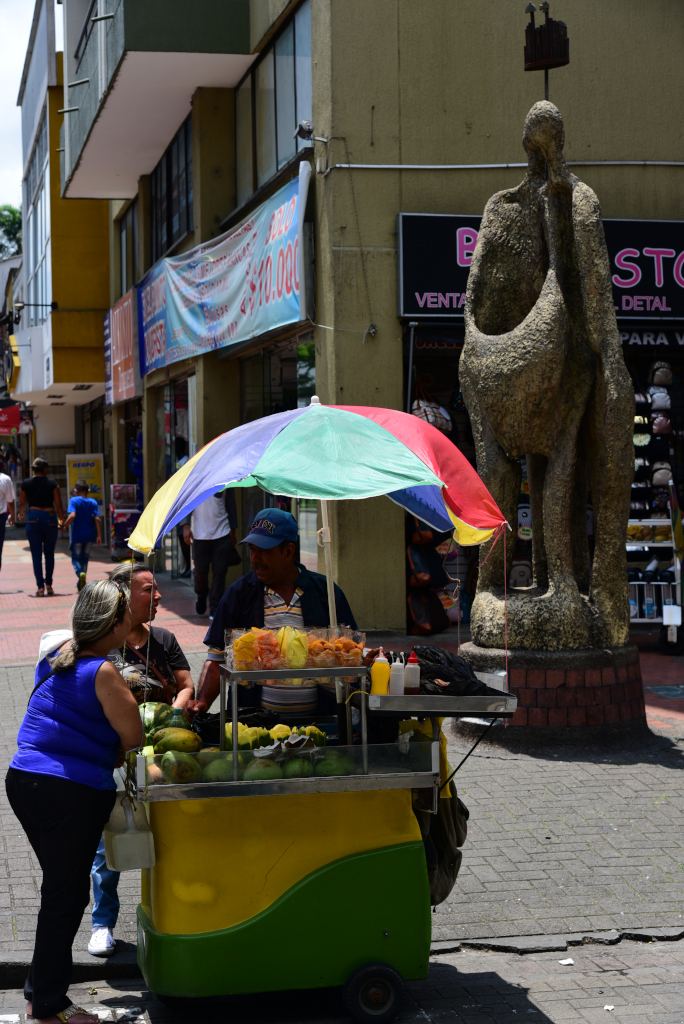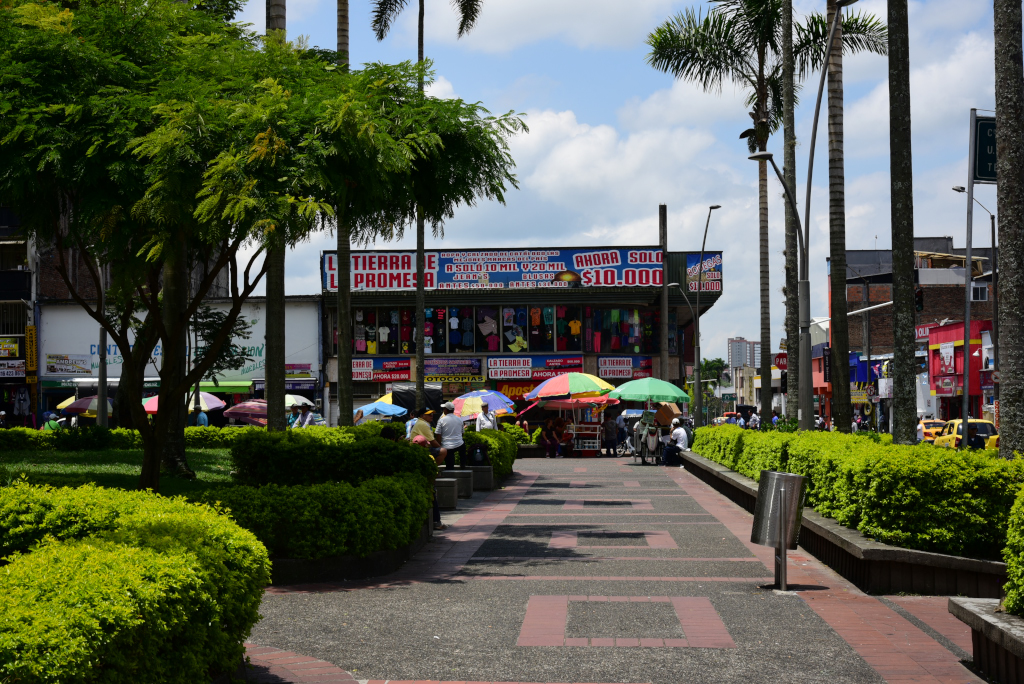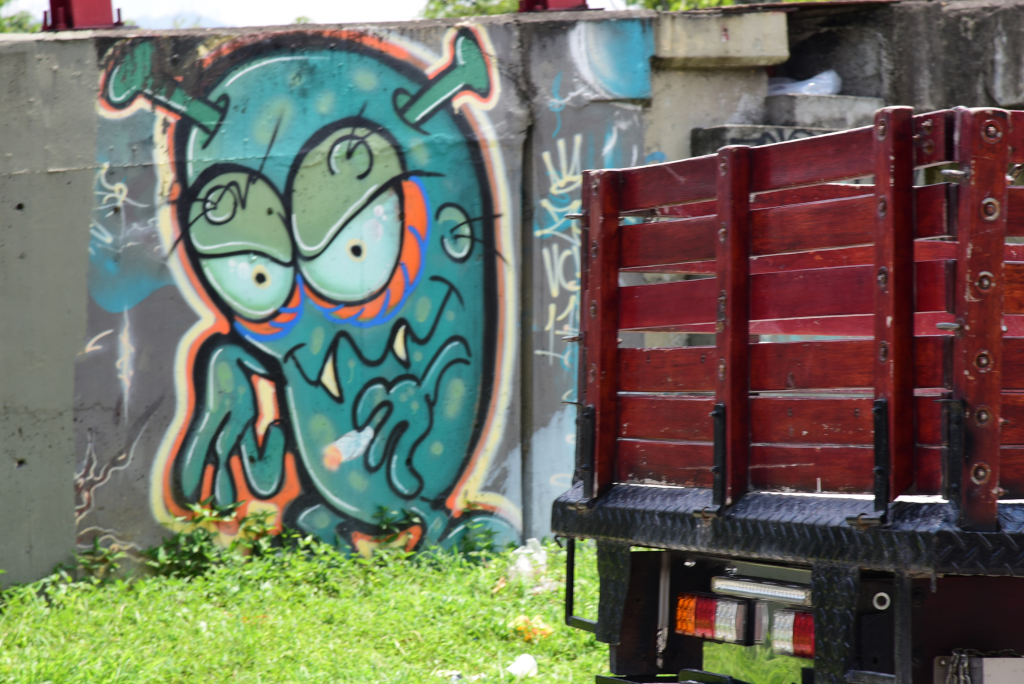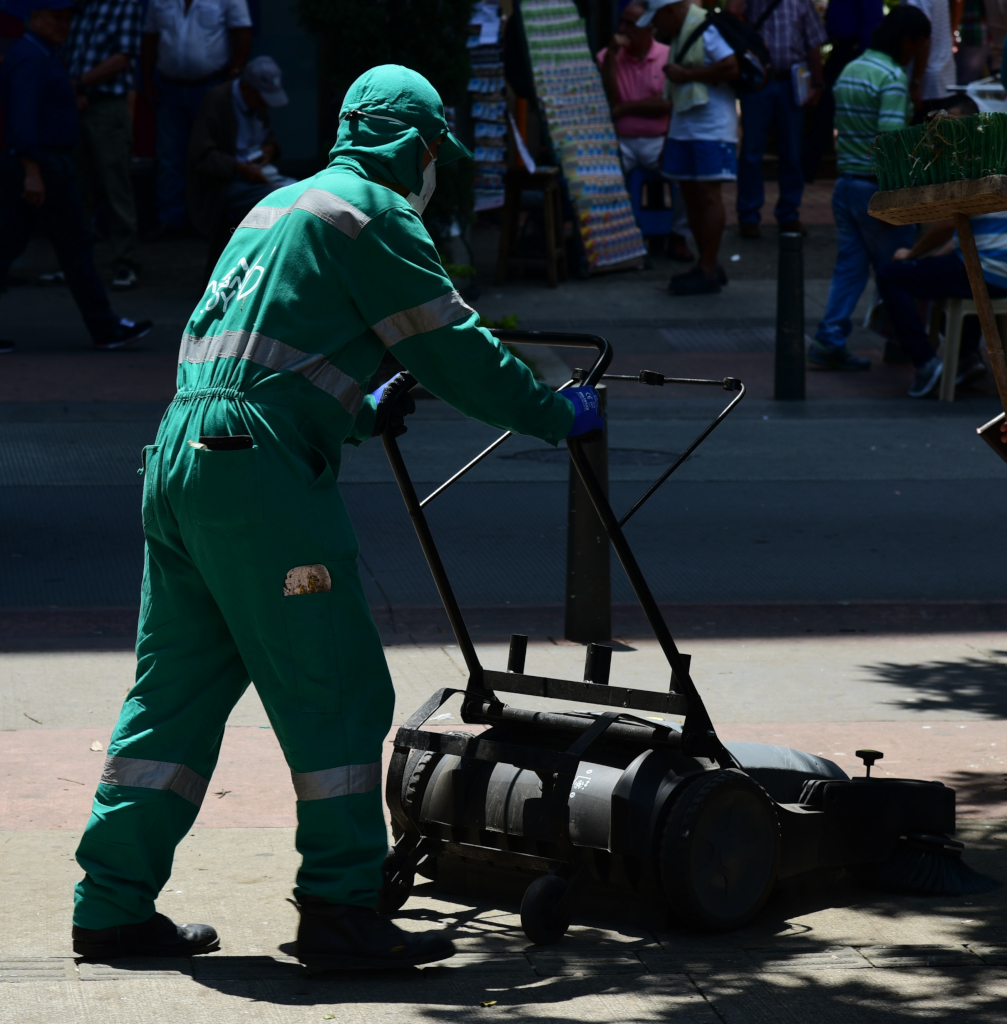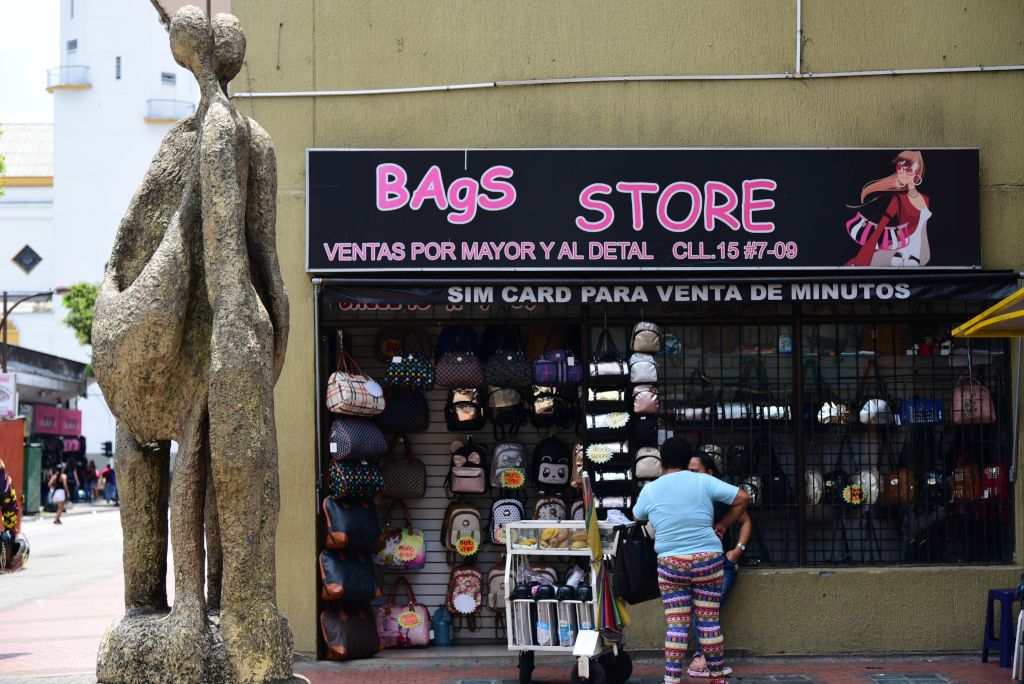April 9, 2018
Another bright, sunny day, although I have to unfortunately leave town today. I wake up on the late side, but the equally late nights have probably not served me particularly well. Consistently going to bed late, getting up very early, and drinking too much coffee will take its toll. What a shocking revelation!
A walk through the neighborhood awaits, mainly to enjoy one last orange juice on the street, a few deep-fried pastries at the adjoining bakery, and then an omelet at the Morus Express. As is typically the case during the daytime, there are odd people wandering around with somewhat surprised looks on their faces, a few vagrants, and most of the businesses are shuttered.
I have another mission, and that is to gift my Merrell hiking shoes to someone in need. Once they got wet, they developed some lumps in the sole and are no longer wearable for me, that is, caused me some serious grief while walking. It would seem strange that a company with such an apparently reputable brand produces such shabby quality, but then I am hardly surprised.
A somewhat surprised Afro-Colombian tells me that he needs shoes, and actually has almost the same size. I tell him how he could salvage the shoes, clean them, but he brushes me off – those are minor points. I walk him towards the edge of the park, and point upwards towards the ledge where I deposited the shoes. He slaps me on the stomach as he walks away: he is hungry, he tells me. I show him half the empanada I have remaining, and he gladly takes it. I should really be buying him food …
One last walk to the bakery for my favorite anise sospiro, to the cajero at the Intercontinental Hotel, and then into El Peñon for a coffee. Of course, it being Sunday most everything is closed, a popular state in this town. The only coffee-related establishment open is the Pane y Dolci del Italiano. Service is running at a crawl this morning, and the pastries and baked goods are almost all gone.
The relaxed, beaming owner assures me he is from Como, Italy, one very beautiful place in the world, which explains the unusual quality of his baked goods and pastries. Actually, the bread products would be more akin to those found in a supermarket in North America, but that already puts them far beyond the typical low standards of Colombian baking. The staff seems to be dealing with the volume of work rather chaotically, something I notice as I sit and wait fruitlessly for service at a table.
At the counter, I notice the stack of pamphlets regarding awareness of Parkinson’s, and then look up to see his head twisting and turning at odd angles, and realize that he is looking directly into the waning years of his life. Hopefully the 25 years he spent in Colombia leading up to now were happy ones …
One last chance to visit the Galeria Kaly and buy some amazing replicas of pre-Colombian ceramics. But the store is closed. On one hand, it would have been fantastic to have such pieces, but on the other, the experience of traveling with such fragile pieces would be fraught with incredible stress, even for the short while remaining on my trip.
One last conversation prior to checking out with the man who I took to be the owner, but he is in fact not. He and his sister are managing the hotel for someone else; they could never afford this kind of property, although they would love to own it. It may be one of the oldest buildings in Cali, San Antonio being already the oldest neighborhood in town.
The property in this neighborhood is so valuable it is sold in euros, not pesos. Their own family owns restaurants in the city, on the outskirts, and of an unusual kind, of significant seating capacity, with an apparently stellar equestrian show. Who would have thought!
The cab driver who takes me to the bus station seems very relaxed and sweet, in a way I would not expect to find in Cali, not that I have any issue with people in Cali. He is actually from southern Huila, not far from Pitalito, an area rich in its blessings, and outside of the archaeological zones around San Agustín, probably receives little tourism. He would love to live a simple life in the country (it doesn’t take spending much time with the man to conclude that!), but it is very hard to earn a living in the country. The universal challenge in this world …
The receptionist at the hotel had assured me that luxurious coach buses provide regular service to Pereira, but that is definitely not the case when I arrive at the bus station. There are a few companies that provide service, but using large vans, which in theory would be acceptable, if it weren’t for the fact that the air conditioning in the vehicle I am assigned barely functions, and that in a car whose windows cannot be opened, on a sunny day in a subtropical climate. Colombia sometimes really becomes old …
At least they were good enough to give me the only seat with ample leg room. The van has a very high ceiling, so I am also not banging my head against the ceiling, and can look out the window without stooping.
The landscape is uneventful, closer to Cali copious amounts of sugar cane, but then broad grasslands with a thick tree canopy on either side of the double-gauge highway, separated by a wide grass meridian. Despite numerous branches on the highway, the meridian is continuous, and the highway wide and well-tended, a departure from some of the more difficult stretches of primary road in the country.
The road traverses what for the most part is a wide, flat valley, the crests of the peaks visible in the distance, the typical view of much of the country’s populated areas sandwiched between two chains of mountains.
On a different trip, I would hopefully stop and spend time in some of the charming burgs we pass through, but time has run out. It is quite apparent that this area of the country is wealthier and more developed than areas I have seen elsewhere, but perhaps that is not a very accurate assessment. It certainly feels very different, less characterized by traditional culture.
Then again, there are place names that recall earlier cultures in the region, such as Calima and Quimbaya, and names of Spanish cities and regions as well. But overall the area evokes nothing more than conventional domestic torpor …
It would make sense to walk around the periphery of the centre of town, to get a feel for Pereira, even though it is now dark. But positive an impression it is certainly not: the narrow streets follow a rectilinear grid pattern with virtually no embellishment, simply a continuum of shuttered retail establishments and offices, with very little street life. Only a few blocks to the south, the types of people seen on the street seem dodgier, and hence I follow the warning of the police officer in the hotel to stay closer to the main square. The city has no character whatsoever: the inner city makes Neiva’s centre look like that Latin Quarter in Paris.
The Plaza Bolívar is mildly interesting, and does host stragglers inside as well as at its periphery, but it would hardly compete with the smallest of village plazas I have seen in Colombia for character. Carrera 7 and 8 are alive and bustling with people, although I would hardly classify them as remotely inviting, what with the utterly sterile backdrop.
The deplorable nature of this environment is hardly the fault of the people, rather, the pitiful urban design the locals are forced to live with. Then again, it could simply be a reflection of this commercial segment of the urban landscape, and that other areas of the city are very different.
To the west, the Parque El Lago, more inviting and lively, although with its requisite stock of locals seemingly at wits’ end, for whom life may not be offering much hope, a stark contrast to the moneyed nature of the sterile cityscape they inhabit. And as far as the culinary choices in the area go, another depressing reality.
There are plentiful pollo asado places, hardly the worst choice, or rather, the best of a bad lot, following by a number of Chinese eateries, arroz paisa (no thanks!), a few pizza places (a possibility), and a few parilla places, one of which looks sharp enough to be inviting, and even plays beautiful joropo music on the sound system.
I mention to the guard in front of the hotel that I am surprised to see so many street people here. He tells me that the phenomenon is very new, perhaps half a year or not much more. Before, there were very small numbers of such people, and now the city is flooded. He suspects they came from Bogota’s El Bronx, an area of major iniquity that was cleaned up a few years ago in Bogotá. El Bronx is in fact not far from the museums in La Candelaria, but then the entire area is home to a lot of people on the margins. Perhaps Pereira is attractive simply inn virtue of being relatively wealthy.
Returning to the Gran Hotel Pereira, I recognize that while the hotel is expensive for my budget (although not outlandishly so), it is far better than its competition in the general area of the centre, at least from what I saw on my walk. Most of the centre is far from appealing, and the hotel is probably located on one of the few blocks that is somewhat reasonable. At least from the street front, most of the hotels are accessed by no more than a narrow staircase, with more spacious lobbies visible on upper floors, but nowhere near the size of my hotel.











